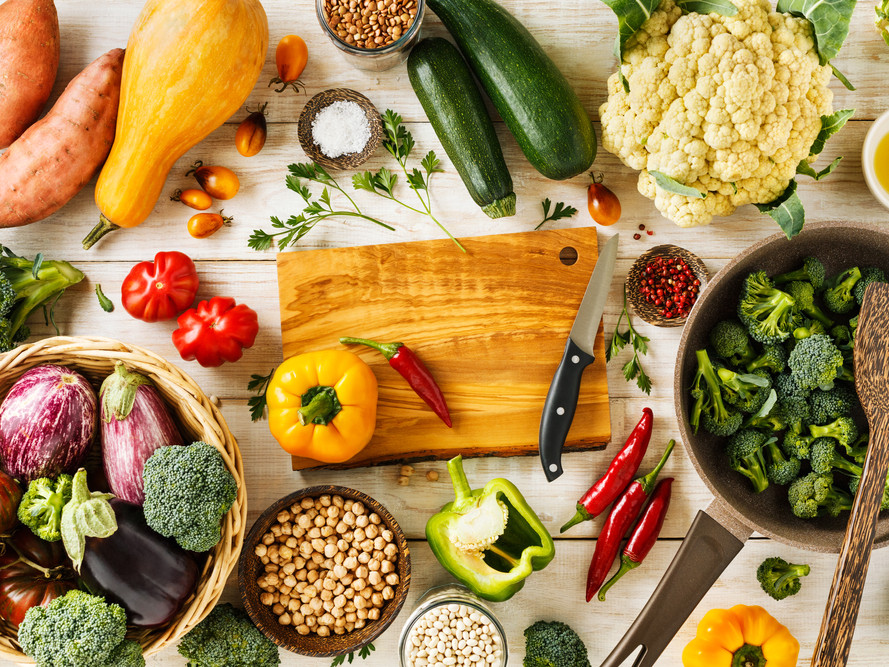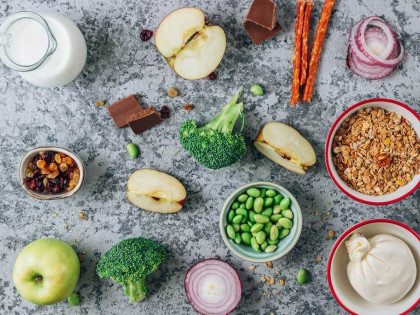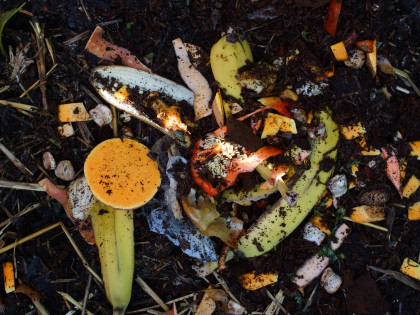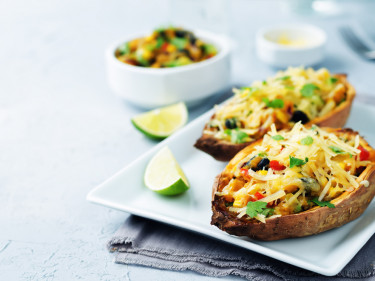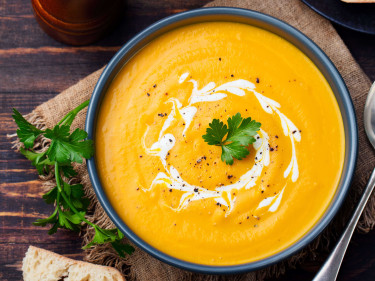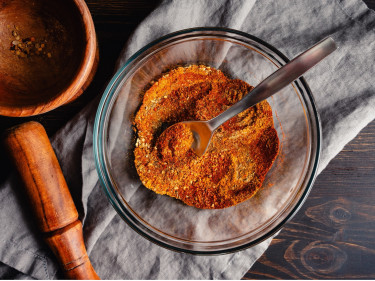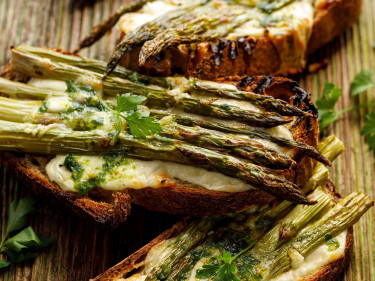Autumn is here, with the change in weather and transition to cooler temperatures, you will start to see different types of fruits and vegetables appearing at the supermarkets and farmer’s markets. In supermarkets often fruits and vegetables that are in season are always available. However, you are likely to notice that in-season fruits and vegetables will be cheaper and available in larger, more consistent quantities.
See our list below of the fruits and vegetables to look out for in Autumn, and some NMNT recipes to put them to good use.
FRUIT | RECIPE | DID YOU KNOW? |
Apples | Apples contain a natural red pigment, lycopene which has been shown to reduce the risk of certain cancers and improve skin quality. | |
Bananas | Bananas are a source of soluble fibre pectin, which may help protect against colon cancer. | |
Figs | Figs are rich in anthocyanin, found in purple/blue coloured fruit and vegetables. As an antioxidant, anthocyanin has been shown to be important in memory improvement, fighting inflammation as well as increasing longevity. | |
Grapes | Grapes contain resveratrol, an antioxidant. Antioxidants act to neutralise free radicals that can cause damage and disease. | |
Kiwifruit | Kiwifruit is a rich source of fibre and can absorb three times its weight in water to help boost stool volume and make stools softer. | |
Lemons | Lemons are part of the citrus family and contain high amounts of Vitamin C. Vitamin C is an important nutrient in helping maintain skin integrity. Vitamin C is also important in stabilisation of collagen which in turn helps maintain clearer, healthier skin. | |
Melons (watermelons) | Watermelons, nectarines and peaches are high in a prebiotic fibre, fructans. Prebiotic fibre avoids digestion until it reaches the colon where it is used by the gut microbiota, which in turn produces compounds that offer protection against disease.
| |
Nectarines | ||
Peaches | ||
Pears | Pears are a source of soluble fibre pectin, which may help protect against colon cancer. | |
Persimmons | Persimmons, plums and quinces are a perfect addition to a picnic grazing board, a fruit salad or a great snack as is. Find out how to create the perfect picnic platter! | Plums contain sorbitol, a complex carbohydrate. This compound passes undigested through the colon and increases stool frequency and consistency. |
Plums | ||
Quinces |
VEGETABLES | RECIPE | DID YOU KNOW? |
Asparagus | Asparagus is a great source of folate, important in the formation of healthy red blood cells, vital for a healthy pregnancy and prevention of neural tube defects in pregnancy. | |
Beans | Beans and beansprouts are high in Vitamin C. The antioxidant properties of Vitamin C help support skin integrity and immune function. | |
Beansprouts | Oops, we don’t have a recipe that includes Bean sprouts yet. Though it’s not far away! Cooking tip: Beansprout be cooked or steamed and placed in a fried rice or served alongside meat or poultry or even as an omelette. | |
Beetroot | Beetroot is a rich source of nitrates. This compound is converted to nitric oxide during digestion which causes arteries to widen and lower blood pressure. Due to increased blood flow, nitrates also help to improve cognitive function. | |
Broccoli | Broccoli is a cruciferous vegetable. Research on the consumption of this group of vegetables has shown they contain several nutrients which can reduce the risk of lung, colorectal, breast and prostate cancers. | |
Cabbage | Cabbage contains sulforaphane, a sulfur-rich compound which may have anti-viral benefits, as well as promoting a healthy gut microbiota. | |
Carrots | Carrots contain several phytonutrients including lycopene, lutein and Vitamin K. These nutrients have been shown to have a protective effect against heart disease and some cancers. | |
Cauliflower | Cauliflower are a good source of allicin , a phytonutrient found in white and brown fruit and vegetables. Research shows allicin can assist in maintaining bone strength, lowering cholesterol and reducing inflammation. | |
Eggplant | Eggplants are rich in anthocyanin, found in purple/blue coloured fruit and vegetables. As an antioxidant, anthocyanin has been shown to be important in memory improvement, fighting inflammation as well as increasing longevity. | |
Lettuce | Lettuce contains several phytonutrients including Vitamin K, Vitamin C and potassium. These phytonutrients which may have protective effects against heart disease and some cancers. | |
Mushrooms | Mushrooms contain niacin which is associated with maintaining clearer, healthier skin and a reduced risk of cancer. | |
Potatoes | Potatoes are a great staple item and addition to any meal. Whether boiled or baked, potatoes are one of the most satiating or filling foods, making you feel fuller for longer. | |
Pumpkins | Pumpkins are rich in beta-carotene, which is converted to Vitamin A in the body. This is an important nutrient in the maintenance and function of cells in our lungs, eyes and skin. | |
Snowpeas | Snowpeas contain essential nutrients including Vitamin C and fibre. These nutrients are important in strengthening our immune system and promoting healthy bacterial growth in our gut. | |
Spring onions | Spring onions are a good source of fructans. This prebiotic fibre avoids digestion until it reaches the colon where it is used by the gut microbiota, which in turn produces compounds that offer protection against disease. | |
Sweetcorn | Sweetcorn contains high amounts of potassium, which is important in heart health. Studies have shown that higher intakes of potassium lower the risk of hypertension and heart disease. | |
Tomatoes | Tomatoes are a rich source of the carotenoid, lycopene. A systematic review of 6 trials showed that those who consumed 1-1.5 large tomatoes daily for 6 weeks had lower levels of triglycerides, total and bad cholesterol as well as an increase in good cholesterol. | |
Turnips | Oops, we don’t have a recipe that includes turnips yet. Though it’s not far away! Cooking tip: Turnips are a versatile vegetable which can be eaten raw or cooked into a stir-fry or as a quick veggie side. | Turnips contains the phytonutrient, glucosinolates. More research is needed to understand whether glucosinolates have an anti-cancer effect on humans, after showing potential in mice. |
Zucchini | Zucchinis contain high amounts of potassium, which is important in heart health. Studies have shown that higher intakes of potassium lower the risk of hypertension and heart disease. |
If any of these recipes contain vegetables that aren’t in season sometimes opting for a frozen or canned choice, here are some tips when looking for some healthy frozen or canned items.
If you’d like to keep up to date throughout the year on what’s in season in your state, check out Seasonal Food Guide Australia!



